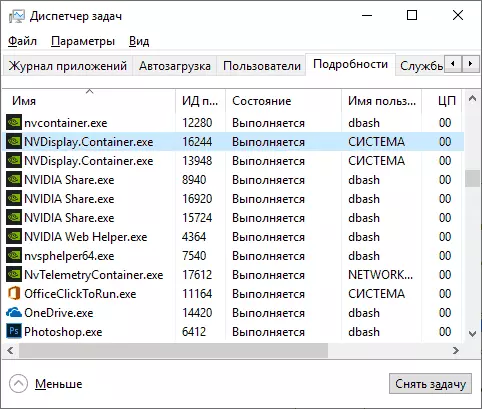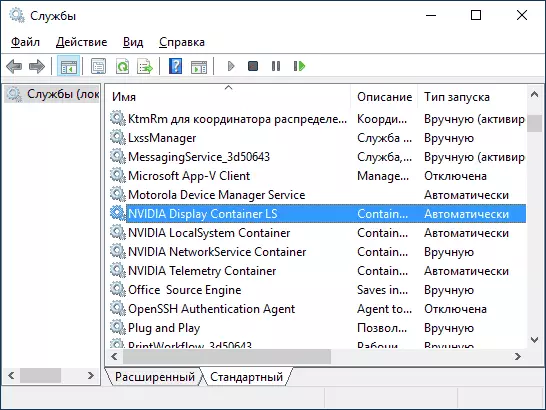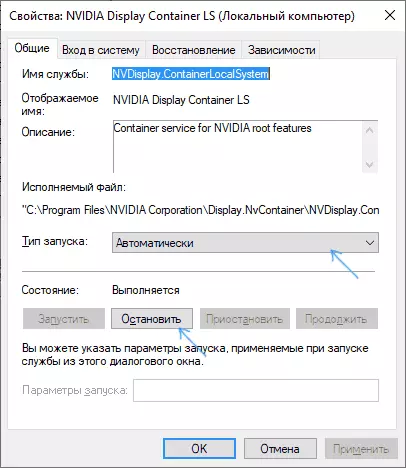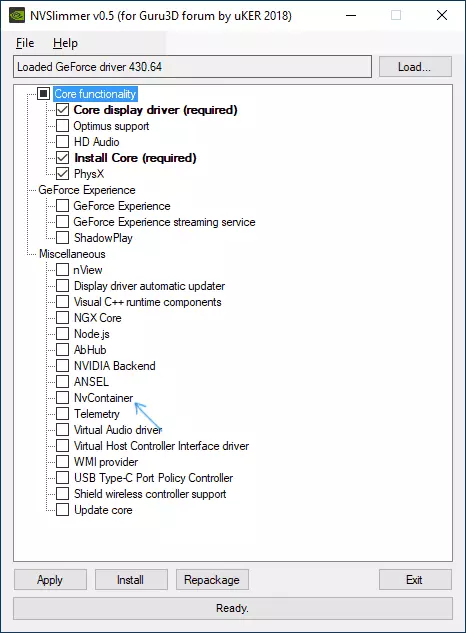
At first, this is the process: Nvdisplay.container.exe is designed to work the NVIDIA control panel in the control panel (you can also run it from the context menu of the desktop). But from the last versions of the driver, it also began to be used to collect additional telemetry data (in addition to collecting the NvtelemetryContainer.exe process), which sometimes leads to a high load on the processor.
If necessary, you can either correct the high load on the processor called nvdisplay.container.exe or disable this process at all (however, the "NVIDIA control panel" will be stopped) - both options are further discussed in the instructions.
Correction of high load on the processor from NVDISPLAY.container.exe

The first method does not imply disconnect this process, but can only allow solving a high loading problem on the CPU called nvdisplay.container.exe. Steps will be as follows:
- Delete the folder: \ Program Files \ Nvidia Corporation \ Display.nvcontainer \ plugins \ Localsystem \ DisplayDriverras
- Remove the folder: \ Program Files \ Nvidia Corporation \ DisplayDriverras
- Complete the processes nvdisplay.container.exe in the Task Manager.
- Restart the computer.
After rebooting, the high load on the processor in the task manager should abyss, while the process itself will work, and the NVIDIA control panel will remain affordable.
How to disable nvdisplay.container.exe
There are various ways to disable NVDIsplay.container.exe process. The easiest of them is to disable the appropriate service. This method will be preferable if you sometimes need the NVIDIA control panel (because the changes made are easy to roll back).
To disable the process in this way, you can use the following steps:
- Press the Win + R keys on the keyboard, enter the Services.msc and press ENTER.
- In the Windows service list that opens, find the NVIDIA Display Container LS and double-click on it.

- Click the Stop button, and then in the "Start Type" field, set "Disabled" and apply settings.

After these steps, the NVDISPLAY.Container.exe process will not appear in the task manager while you manually run it.
Another option is not to install this component on the computer. In the NVIDIA driver installer, this will not be done even after selecting a custom installation option, however, the third-party utility NVSLIMMER allows you to perform the task.
Before performing the described
- Download the NVSLIMMER utility (official website - Guru3d.com/files-Details/nVidia-Driver-slimming-Utility.html)
- Run it and specify the path to the NVIDIA driver installer (you can download it from the official site, and you can find a backup on your computer in a hidden folder C: \ ProgramData \ Nvidia Corporation \ Downloader in one of the invested folders with the name consisting of letters and numbers).
- In NVSLimmer, select which components must be included in the driver installer, you can only leave points in the Core Functionality section if you only need drivers. NVDIsplay.container.exe meets the corresponding item in the Miscellaneous section.

- Click Install to start the installation, or RePackage to prepare a new file installer for the subsequent driver installation without unnecessary components. I recommend using the second option, then delete the available NVIDIA drivers using Display Driver Uninstaller, and then start the prepared installer.
As a result of all these actions, you will receive only the necessary components of the NVIDIA GeForce driver without related utilities, including without the NVDIsplay.container.exe process.
